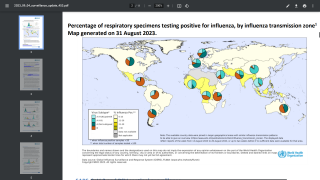The WHO Can't Find Flu Outbreaks

As the Southern Hemisphere's flu season ends and migrates to the Northern Hemisphere, new data indicates a lull in influenza outbreaks.
In the temperate zones of the Northern Hemisphere, including the United States, indicators of influenza activity were reported at low levels or below the seasonal threshold in most reporting countries.
Published on October 9, 2023, the World Health Organization (WHO)'s Influenza Update N° 455 concluded influenza detections remained low.
The WHO's conclusion was based on data from the National Influenza Centres and other national influenza laboratories from 107 countries, areas, or territories that tested more than 298,993 specimens from early September 2023 to September 17, 2023.
While seasonal flu viruses are detected year-round, the exact timing and duration of any flu season varies by country. From a regional perspective, the WHO reported:
In Oceania, including Australia, influenza activity decreased with influenza A(H1N1)pdm09, influenza A(H3N2) and influenza B viruses all cocirculating.
In temperate South America, influenza detections remained low overall.
In the Caribbean countries, influenza activity remained low overall.
In the Central American countries, influenza activity decreased overall.
Last week, the U.S. Centers for Disease Control and Prevention published its week #39 Influenza Surveillance Report. As of October 6, 2023, seasonal flu rates were low nationally, with 444 (1%) positive specimens reported.
The good news is that the influenza vaccine supply is well-positioned to meet consumer demand when the flu season activates in the U.S.
As of September 30, 2023, 116.29 million influenza doses had been distributed in the U.S. These flu shots are offered at most clinics and pharmacies.
Our Trust Standards: Medical Advisory Committee
























